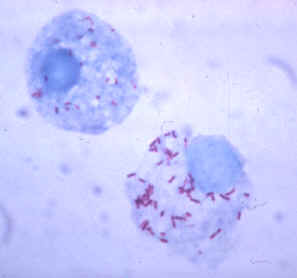Rocky Mountain spotted fever pathophysiology
|
Rocky Mountain spotted fever Microchapters |
|
Differentiating Rocky Mountain spotted fever from other Diseases |
|---|
|
Diagnosis |
|
Treatment |
|
Case Studies |
|
Rocky Mountain spotted fever pathophysiology On the Web |
|
American Roentgen Ray Society Images of Rocky Mountain spotted fever pathophysiology |
|
Directions to Hospitals Treating Rocky Mountain spotted fever |
|
Risk calculators and risk factors for Rocky Mountain spotted fever pathophysiology |
Editor-In-Chief: C. Michael Gibson, M.S., M.D. [1]
Overview
Pathophysiology & Etiology

- Rocky Mountain spotted fever is caused by Rickettsia rickettsii, a small bacterium that grows inside the cells of its hosts.
- These bacteria range in size from 0.2 x 0.5 micrometers to 0.3 x 2.0 micrometers.
- They are difficult to see in tissues by using routine histologic stains and generally require the use of special staining methods.
- In the human body, rickettsiae live and multiply primarily within cells that line small- to medium-sized blood vessels.
- Spotted fever group rickettsiae can grow in the cytoplasm or in the nucleus of the host cell.
- Once inside the host the rickettsiae multiply, resulting in damage and death to these cells.
- This causes blood to leak through tiny holes in vessel walls into adjacent tissues.
- In turn the leakage process causes the rash that is traditionally associated with Rocky Mountain spotted fever and also causes damage to organs and tissues.
Taxonomy
| Classifications | |
|---|---|
| Domain | Bacteria |
| Kingdom | Prokaryote |
| Phylum | Proteobacteria |
| Class | Alpha Protobacteria |
| Order | Rickettsiales |
| Family | Rickettsiaceae |
| Genus | Rickettsia |
| Species | Rickettsii |